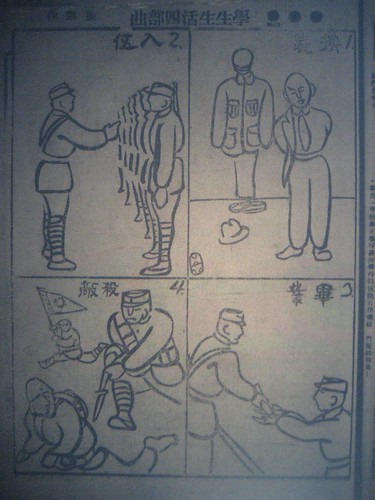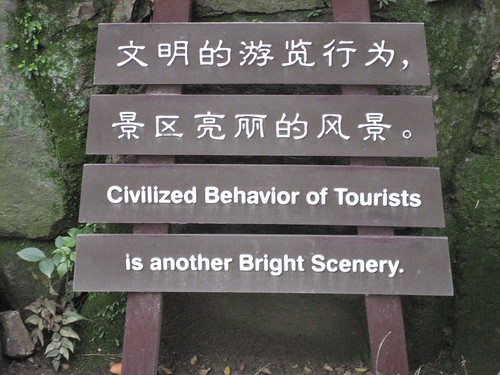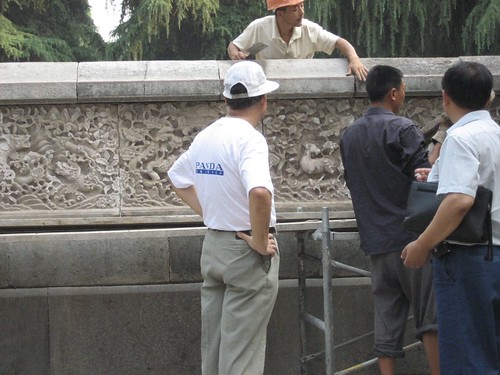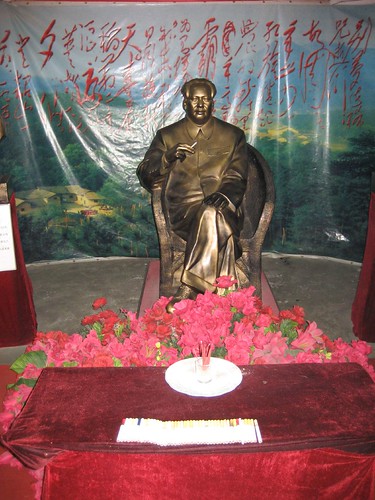I recently came across the Ancient Japan weblog. Looking through its archives, I see that it has been offering up interesting postings for over a year now and joins the few weblogs out there, at least that I have come across, which directly focuses on Japanese history. I sent off a few questions to the weblog’s author, Joseph Ryan, to learn a bit more about his website:
Q: What is the scope of coverage for the Ancient Japan blog?
A: The material appearing on The Ancient Japan Blog stretches from the Jomon to the Kofun period. Related to that time frame, I plan on posting reviews and purchase links for new books, updates on current Japanese archaeological issues (such as the Takamatsuzuka Kofun restoration), and personal research that I hope will spark exciting conversation.
Q: How did you become interested in the topic?
A: I originally became interested in Japanese history after a rather embarrassing incident at a local fabric store. I was in seventh grade at the time. I went to the store with my mother and her friend in order to buy some generic “Chinese” fabric for some curtains (I thought they’d look great in my room…). My mother’s friend asked me if I was interested in Japanese items as well. Truth be told, I didn’t know where Japan was on a map. I returned home that evening and read general descriptions of Japan’s geography, history, and economy in the Encarta Encyclopedia. Not surprisingly, the small, romanticized blurb on samurai caught my attention. There was no turning back at that point–I believe I bought all the Japanese-related books that Borders and Barnes and Noble had to offer. As to how I became interested in specifically ancient Japanese history, I was puzzled at the vague references to early Korean-Japanese relations and the relatively small amount of space devoted to the Yayoi/Kofun periods in the first book of Sansom’s /A History of Japan /trilogy. I suppose that was like hiding the Christmas presents from the kids–the less the kids know, the more they inquire. I suppose the small amount of researchers in the field, the effects ancient history had on the formation of Japanese society and government, and the overall challenge of peering through two thousand years of mist to a fascinating age keeps my interest alive.
Q: What do you think are the issues and questions related to the study of ancient Japan which those outside of Japan have most taken an interest to? Why?
A: Two words just popped into my head: Kofun and Yamatai. Why kofun? They’re mysterious, huge, and awe-inspiring manifestations of the rivalry between and the power of regional chieftains and Yamato Kings. Why Yamatai? Thanks to the annoyingly vague Wei Zhi, the location of Himiko’s chiefdom of Yamatai will provide fodder for research for generations of scholars to come. As more and more scholars realize that the path toward answering questions on ancient Japan is one of interdisciplinary cooperation, archaeological and traditional historical methods of analyzing these ancient problems are revealing more and more fascinating details. There are surely other topics that Western researchers have found interesting (such as questions surrounding race and origin), but the size, shape, and meaning of kofun, and the location of Yamatai strike me as most attractive to those outside of Japan. (It’s here that I’d like to plug Professor J. Edward Kidder, Jr.’s new book on Yamatai, Himiko, and the nature of Japanese society during the transition from the Yayoi to the Kofun period. It’s called Himiko and Japan’s Elusive Chiefdom of Yamatai: Archaeology, History, and Mythology.)
Q: What are other good resources online for those who might be interested in the study of ancient Japanese history?
A: I sure wish there was more online–it would save me a bundle not having to buy $80 monographs in order to get a prodding historical question answered! If people don’t know Japanese, it can be very difficult to find trustworthy, detailed information on the Internet. A list of appropriate websites would make this already long post too long, so please check out my new post here. It’s a work in progress.
Thanks to Joseph for his replies, and be sure to check out his links to useful websites on ancient Japan. It looks like the blog may become a group effort in the future. If you are interesting in joining the weblog as a contributor, leave a note introducing yourself here.







